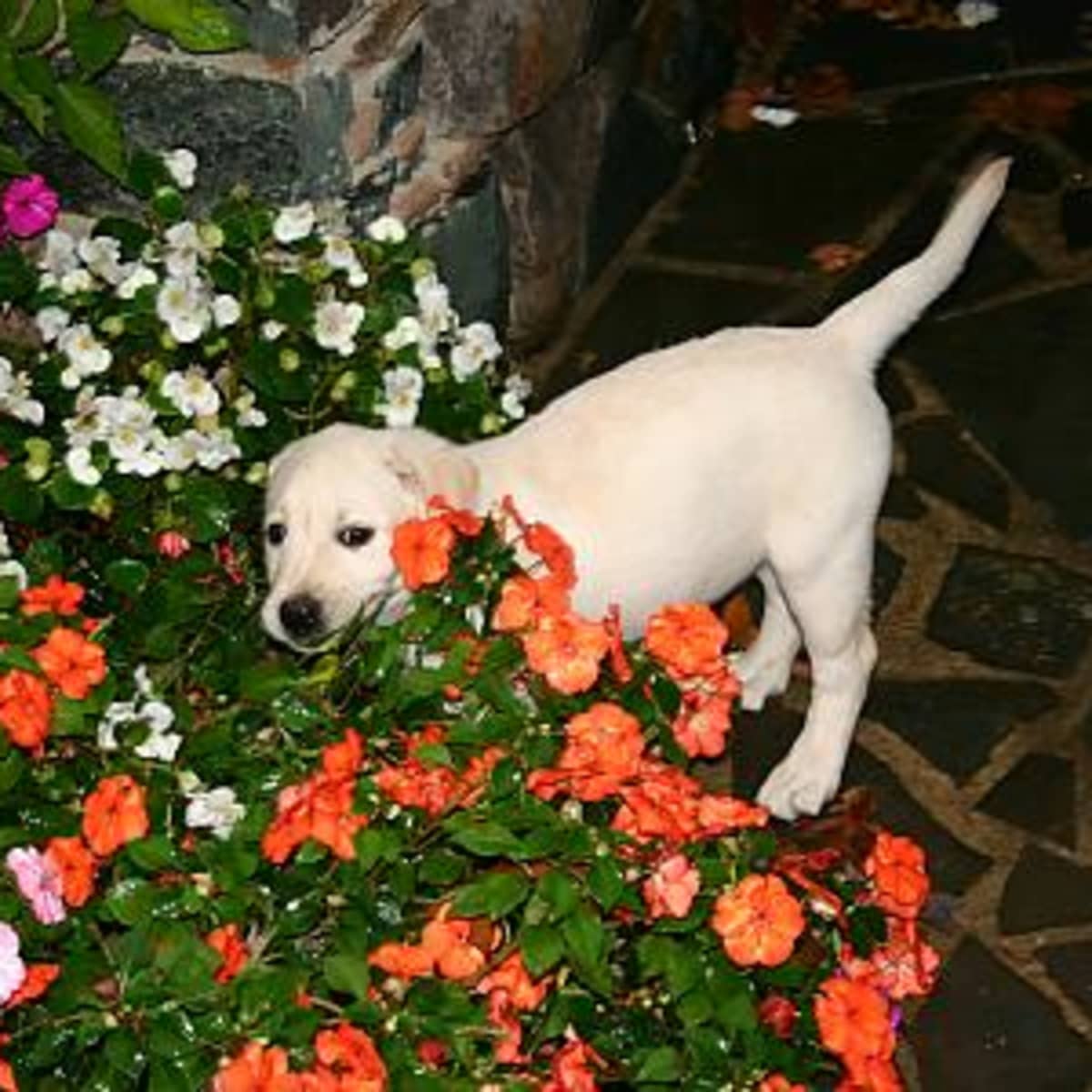Key Takeaways
- Full sun perennials thrive in areas with 6-8 hours of direct sunlight daily.
- Pet-safe plants ensure your furry friends can explore without risk of poisoning.
- Top choices include Coreopsis, Bee Balm, Blanket Flower, and Salvia.
- Proper soil preparation, watering, and fertilizing are crucial for healthy growth.
- Designing a dog-friendly patio involves creating safe spaces and using raised beds.
Pet Safe Full Sun Perennial Patio Plants
Understanding Pet-Safe Plants
When planning your garden, it’s essential to consider the safety of your pets. Many common plants can be toxic to dogs and cats, leading to severe health issues if ingested. Pet-safe plants are non-toxic and pose no threat to your furry friends, allowing them to explore and enjoy the garden without any risks.
Before selecting plants, always check their safety status with reputable sources like the ASPCA. This precaution helps ensure your garden is a safe haven for both your plants and pets.
“How to Plant a Dog-Friendly Garden …” from dengarden.com and used with no modifications.
Why Full Sun Perennials Are Ideal for Your Patio
Full sun perennials are plants that thrive in areas receiving 6-8 hours of direct sunlight each day. These plants are perfect for patios and sunny spots in your garden, providing vibrant colors and lush foliage throughout the growing season.
Besides their beauty, full sun perennials are typically hardy and low-maintenance, making them an excellent choice for busy gardeners. They also attract pollinators like bees and butterflies, adding to the ecological value of your garden. For instance, Texas sage is not toxic to pets, making it a safe and beautiful addition to your garden.
Top Pet Safe Full Sun Perennial Plants
Coreopsis
Coreopsis, also known as tickseed, is a bright and cheerful perennial that blooms profusely in full sun. These plants are incredibly hardy and can tolerate various soil types, making them a versatile addition to any garden.
Coreopsis plants produce daisy-like flowers in shades of yellow, pink, and red, attracting pollinators and adding a splash of color to your patio. Most importantly, they are non-toxic to pets, ensuring your garden remains a safe space for your furry friends.
Bee Balm (Monarda)
Bee Balm, or Monarda, is a vibrant perennial known for its stunning, tubular flowers that come in red, pink, purple, and white hues. This plant is a magnet for pollinators, including bees, butterflies, and hummingbirds, making it a valuable addition to any garden.
Besides its beauty, Bee Balm is pet-safe and can tolerate full sun conditions, thriving in well-drained soil. Its aromatic foliage also adds a pleasant fragrance to your garden, enhancing the overall sensory experience.
Blanket Flower (Gaillardia)
Blanket Flower, or Gaillardia, is a hardy perennial that produces striking, daisy-like flowers with fiery red and yellow petals. These plants are drought-tolerant and thrive in full sun, making them ideal for sunny patios and garden beds.
Gaillardia is non-toxic to pets, ensuring your garden remains a safe and inviting space for your dogs and cats. The flowers bloom from early summer to fall, providing continuous color and attracting various pollinators.
Salvia
Salvia, commonly known as sage, is a versatile perennial that comes in a wide range of colors, including blue, purple, red, and white. These plants are known for their long blooming period and ability to attract pollinators.
Salvia is pet-safe and thrives in full sun, requiring well-drained soil and moderate watering. Their aromatic foliage can also deter pests, making them a practical and beautiful addition to your garden.
Care Tips for Full Sun Perennials
Soil Preparation
Proper soil preparation is crucial for the healthy growth of full sun perennials. Start by testing your soil’s pH level and adjusting it if necessary. Most perennials prefer a slightly acidic to neutral pH (6.0-7.0). For those with pets, consider growing pet-friendly container gardens to ensure safety and health.
Amend the soil with organic matter, such as compost or well-rotted manure, to improve its structure and fertility. This addition will help retain moisture and provide essential nutrients to your plants.
Designing a Dog-Friendly Patio Garden
Creating a dog-friendly patio garden involves more than just choosing the right plants. It’s about designing a space where both you and your pets can relax and enjoy the outdoors safely. Here are some tips to get you started.
Creating a Safe Space for Dogs
First and foremost, ensure your patio is secure. If you have a fenced area, check for any gaps or weak spots where your dog might escape. A sturdy, well-maintained fence is essential for keeping your pets safe.
Besides that, consider adding shaded areas where your dog can rest and cool off during hot days. A canopy, pergola, or even a large umbrella can provide much-needed shade and make the patio more comfortable for your furry friends.
Incorporating Pathways
Pathways not only add structure and aesthetic appeal to your garden but also guide your pets through the space. Use materials like flagstone, gravel, or mulch to create clear paths that are gentle on your dog’s paws. For more ideas on creating a pet-friendly garden, consider adding pet-friendly container gardens.
Make sure the pathways are wide enough for your dog to navigate comfortably. This design element helps prevent your pets from trampling over delicate plants and keeps the garden looking neat and organized.
Using Raised Beds and Containers
- Raised beds and containers are excellent for keeping plants out of reach of curious pets.
- They also make gardening more accessible, reducing the need for bending and kneeling.
- Choose sturdy materials for raised beds, such as wood or metal, to withstand your dog’s playful nature.
- Containers can be placed on tables or shelves, adding vertical interest to your garden design.
By using raised beds and containers, you can create a multi-layered garden that maximizes space and keeps your plants safe from pet-related damage.
Additional Dog Safe Plants to Consider
While we’ve already covered some fantastic full sun perennials, there are many other pet-safe plants you can incorporate into your garden. Here are a few more options to consider, such as growing chicory in pet-friendly container gardens.
Stonecrop (Sedum)
Stonecrop, or Sedum, is a hardy succulent that thrives in full sun and well-drained soil. These plants come in various shapes and colors, adding texture and visual interest to your garden. For more information on safe plants for pets, check out this list of safe plants for dogs.
Sedum is non-toxic to pets, making it a safe choice for your dog-friendly patio. Their drought-tolerant nature also means they require minimal maintenance, perfect for busy gardeners.
Roses (Rosa)
Roses are a classic garden favorite known for their stunning blooms and delightful fragrance. While some varieties can be challenging to grow, many modern roses are bred for disease resistance and hardiness.
Most importantly, roses are safe for pets. However, be cautious with thorny varieties, as they can cause minor injuries to curious dogs. Opt for thornless or low-thorn varieties to minimize this risk.
Lamb’s Ear
Lamb’s Ear is a soft, velvety perennial that adds a unique texture to your garden. Its silvery-green leaves create a striking contrast with other plants, and it thrives in full sun and well-drained soil.
This plant is pet-safe and can tolerate some foot traffic, making it an excellent ground cover for areas where your dog might roam. Its low-maintenance nature also makes it a great choice for busy gardeners. For more information on pet-safe evergreen shrubs, check out this article.
- Marigolds: Bright, cheerful flowers that repel pests and are safe for pets.
- Snapdragons: Tall, colorful spikes that add vertical interest and are non-toxic to pets.
- Petunias: Low-growing, vibrant flowers that bloom all summer and are safe for dogs.
By incorporating a variety of pet-safe plants, you can create a diverse and visually appealing garden that both you and your pets will love. For more ideas, consider growing chicory in pet-friendly container gardens.
Preventing Common Garden Hazards for Dogs
Even with a carefully planned garden, it’s essential to be aware of potential hazards that could harm your pets. Here are some common garden dangers and how to prevent them.
Toxic Plants to Avoid
Many popular garden plants can be toxic to dogs if ingested. It’s crucial to know which plants to avoid to keep your pets safe. For more information, check out this list of beautiful pet-safe flowers for your home and garden.
- Azaleas: Can cause vomiting, diarrhea, and even heart failure in severe cases.
- Daffodils: Bulbs are particularly toxic and can cause severe gastrointestinal issues.
- Lilies: Extremely toxic to cats and can cause kidney failure.
- Foxglove: Contains cardiac glycosides, which can affect heart function.
Always research any new plants before adding them to your garden to ensure they are safe for your pets. For more information, you can refer to pet-safe flowers for home and garden.
Even with a carefully planned garden, it’s essential to be aware of potential hazards that could harm your pets. Here are some common garden dangers and how to prevent them.
Pesticide and Fertilizer Safety
Many pesticides and fertilizers contain chemicals that can be harmful to pets. To keep your garden safe, opt for organic or pet-safe products whenever possible. Always follow the manufacturer’s instructions for application and storage.
- Store all chemicals in a secure location out of your pet’s reach.
- Apply pesticides and fertilizers during times when your pets are indoors.
- Allow treated areas to dry completely before letting your pets back outside.
- Consider using natural alternatives like neem oil, diatomaceous earth, or compost tea.
By taking these precautions, you can maintain a healthy garden without putting your pets at risk.
Supervision and Training
Supervising your pets while they are in the garden is one of the best ways to prevent accidents. Keep an eye on them, especially if they are prone to digging or chewing on plants.
Besides supervision, training your pets to respect the garden boundaries can be highly effective. Teach them commands like “leave it” or “stay” to discourage unwanted behavior. Reward them with treats and praise when they follow your instructions. For more tips on creating a pet-friendly garden, check out these pet-safe evergreen shrubs that can withstand dog urine.
With consistent supervision and training, your pets will learn to enjoy the garden without causing damage or putting themselves in danger. For more tips on creating a safe outdoor environment, check out these pet-safe evergreen shrubs.
List of ASPCA Nontoxic full Sun Perennial Plants
| Achira |
| African Daisy |
| Antirrhinum Multiflorum |
| Bachelors Buttons |
| Blue Echeveria |
| Canna Lily |
| Cape Marigold |
| Celosia Globosa |
| Celosia Plumosa |
| Celosia Spicata |
| Common Snapdragon |
| Dill |
| Coreopsis/ Tickseed |
| Easter Daisy |
| Emerald Ripple Peperomia |
| Fairy Fountain |
| Fire Weed |
| Flame of the Woods |
| Florida Butterfly Orchid |
| Fortunes Palm |
| Gerber Daisy |
| Golden Bells |
| Golden Lace Orchid |
| Golden Shower Orchid |
| Hawthorn |
| Honey Plant |
| Irish Moss |
| Jewel Orchid |
| Lily |
| Lily of the Valley Orchid |
| Locust Pods |
| Madagascar Jasmine |
| Mexican Firecracker |
| Mexican Rosettes |
| Mistletoe Cactus |
| Mockernut Hickory |
| Mountain Camellia |
| Mountain Grape |
| Mulberry Bush Greenbrier |
| Mulberry Tree |
| Nasturtium |
| Night Blooming Cereus |
| Old Man Cactus |
| Pansy Orchid |
| Pincushion Flower |
| Queens Spiderwort |
| Queensland Arrowroot |
| Red Berried Greenbrier |
| Resurrection Lily |
| Rosemary |
| Scarborough Lily |
| Scarlet Sage |
| Sudan Grass |
| Sunflower |
| Texas Sage |
| Thyme |
| Torch Lily |
| Turban Squash |
| Turf Lily |
| Umbrella Plant |
| Vinca |
| Violet Slipper Gloxinia |
| Weeping Bottlebrush |
| White Ginger |
| Wild Strawberry |
| Zinnia |
Conclusion: Creating a Safe and Beautiful Patio Garden
Designing a dog-friendly patio garden requires thoughtful planning and careful plant selection. By choosing pet-safe full sun perennials and implementing safety measures, you can create a beautiful and secure outdoor space for both you and your furry friends to enjoy.
Final Thoughts and Recommendations
Remember to research any new plants before adding them to your garden to ensure they are safe for your pets. Regularly inspect your garden for potential hazards and take proactive steps to address them. With a little effort and attention to detail, you can create a stunning patio garden that provides a safe haven for your pets and a tranquil retreat for yourself.
Frequently Asked Questions (FAQ)
What are the best full sun perennials that are safe for dogs?
Some of the best full sun perennials that are safe for dogs include Coreopsis, Bee Balm, Blanket Flower, and Salvia. These plants thrive in sunny conditions and pose no threat to your pets. For more options, consider pet-safe evergreen shrubs that can withstand dog urine.
How can I keep my dog safe while gardening?
To keep your dog safe while gardening, choose pet-safe plants, use organic or pet-safe pesticides and fertilizers, supervise your pets in the garden, and train them to respect garden boundaries. Creating shaded areas and using raised beds can also help protect your plants and pets.
Are roses safe for dogs?
Yes, roses are generally safe for dogs. However, be cautious with thorny varieties, as they can cause minor injuries. Opt for thornless or low-thorn varieties to minimize this risk.
“By choosing pet-safe plants and implementing safety measures, you can create a beautiful and secure outdoor space for both you and your furry friends to enjoy.”
With these tips and recommendations, you’re well on your way to creating a stunning and safe patio garden that both you and your pets will love. Happy gardening!






